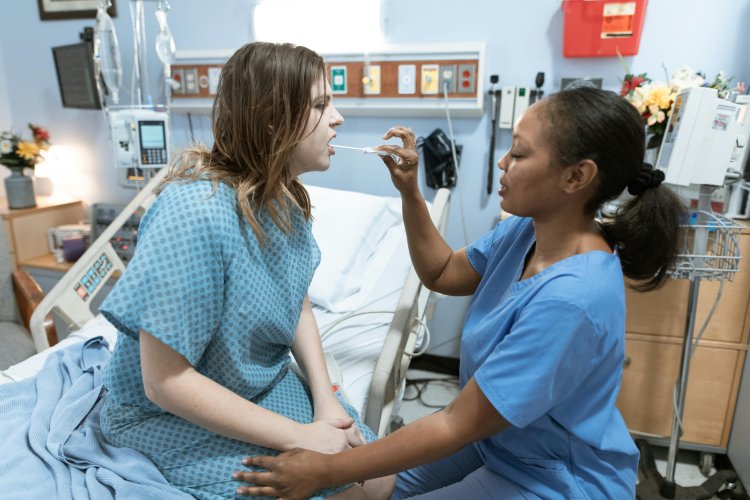Remote Patient Monitoring: Enhancing Care Beyond the Clinical Setting
Remote Patient Monitoring: Enhancing Care Beyond the Clinical Setting

1. Introduction
2. Understanding Remote Patient Monitoring (RPM)
3. The Benefits of Remote Patient Monitoring
4. Technology Behind Remote Patient Monitoring
5. Remote Patient Monitoring in Chronic Disease Management
6. Remote Patient Monitoring in Acute Care
7. Challenges and Considerations
8. Regulatory and Ethical Implications
9. Future Directions of Remote Patient Monitoring
10. Conclusion
1: Introduction:
In recent years, healthcare delivery has undergone a significant transformation with the advent of remote patient monitoring (RPM) technology. RPM allows healthcare providers to monitor patients outside of traditional clinical settings, using various digital tools and devices. This blog explores the concept of remote patient monitoring, its benefits, the technology behind it, its applications in chronic disease management and acute care, as well as challenges, regulatory considerations, and future directions.
2: Understanding Remote Patient Monitoring(RPM):
Remote patient monitoring (RPM) involves the use of digital technologies to collect medical and other health-related data from individuals in one location and electronically transmit that information securely to healthcare providers in different locations for assessment and recommendations. RPM can encompass a wide range of devices, including wearable sensors, mobile apps, and home-based monitoring equipment.
3: The Benefits of Remote Patient Monitoring:
Remote patient monitoring offers several benefits to both patients and healthcare providers:
• Early detection of health issues: RPM enables continuous monitoring of vital signs and symptoms, allowing healthcare providers to detect changes or abnormalities early.
• Improved patient outcomes: By providing real-time data and feedback, RPM can help patients better manage their conditions, leading to improved outcomes and reduced hospitalizations.
• Enhanced patient engagement: RPM empowers patients to take a more active role in their healthcare by providing access to their own health data and encouraging self-management.
• Increased efficiency and cost-effectiveness: Remote monitoring can streamline care delivery, reduce unnecessary office visits, and lower healthcare costs by preventing complications and hospital readmissions.
4: Technology Behind Remote Patient Monitoring:
The technology behind remote patient monitoring encompasses various devices and platforms, including:
• Wearable sensors: Devices such as smartwatches, fitness trackers, and medical-grade wearables can collect data on vital signs, activity levels, sleep patterns, and other health metrics.
• Mobile apps: Smartphone apps enable patients to input data, track symptoms, receive reminders, and communicate with their healthcare providers remotely.
• Home-based monitoring equipment: Devices for measuring blood pressure, glucose levels, oxygen saturation, and other vital signs can be used at home and transmit data securely to healthcare providers.
5: Remote Patient Monitoring in Chronic Disease Management:
Remote patient monitoring is particularly valuable in management of chronic diseases such as diabetes, hypertension, heart failure, and chronic obstructive pulmonary disease (COPD). By continuously monitoring key indicators such as blood glucose levels, blood pressure, and weight, healthcare providers can adjust treatment plans in real-time, intervene early to prevent complications, and provide personalized care tailored to each patient's needs.
6: Remote Patient Monitoring in Acute Care:
In acute care settings, remote patient monitoring can facilitate early detection of deteriorating conditions and prompt intervention to prevent adverse events. For example, in hospital intensive care units (ICUs), RPM systems can monitor patients' vital signs, alerting clinicians to changes in condition and enabling timely interventions to improve outcomes and reduce mortality rates.
7 Challenges and Considerations:
Despite its potential benefits, remote patient monitoring also presents several challenges and considerations, including:
• Data security and privacy concerns: Transmitting sensitive health information over digital networks raises concerns about data security, privacy breaches, and compliance with regulatory requirements such as the Health Insurance Portability and Accountability Act (HIPAA).
• Technology limitations: The accuracy, reliability, and interoperability of remote monitoring devices and platforms can vary, posing challenges for integration into existing healthcare systems and workflows.
• Patient engagement and adherence: Remote monitoring requires active participation and cooperation from patients, which may be challenging for some individuals due to technological barriers, cognitive impairments, or lack of motivation.
• Reimbursement and financial sustainability: Lack of standardized reimbursement models for remote patient monitoring services can pose financial challenges for healthcare providers and limit widespread adoption.
8: Regulatory and Ethical Implications:
Regulatory and ethical considerations surrounding remote patient monitoring include:
• Compliance with regulatory requirements: Healthcare organizations must ensure that remote monitoring systems comply with regulatory standards for data security, privacy, and patient safety.
• Informed consent and patient autonomy: Patients should be fully informed about the purpose, risks, and benefits of remote monitoring and have the right to consent or decline participation based on their preferences and values.
• Equity and access: Efforts should be made to address disparities in access to remote monitoring technology and ensure that vulnerable populations have equal opportunities to benefit from these services.
9 Future Directions of Remote Patient Monitoring:
The future of remote patient monitoring holds promise for further innovation and integration into healthcare delivery models. Key areas of focus for future development include:
• Advancements in sensor technology: Continued advancements in wearable sensors, remote monitoring devices, and artificial intelligence algorithms will enhance the accuracy, reliability, and usability of remote monitoring systems.
• Integration with telemedicine and virtual care: Remote patient monitoring will become increasingly integrated with telemedicine platforms, enabling seamless communication and collaboration between patients and healthcare providers.
• Expansion of predictive analytics: The use of predictive analytics and machine learning algorithms will enable remote monitoring systems to identify patterns, predict health outcomes, and personalize interventions based on individual patient data.
10 Conclusion:
Remote patient monitoring represents a transformative approach to healthcare delivery, enabling continuous monitoring, personalized interventions, and improved outcomes beyond the confines of traditional clinical settings. By harnessing the power of digital technology, remote monitoring has the potential to revolutionize chronic disease management, acute care, and preventive health strategies. As the field continues to evolve, it is essential to address challenges related to data security, patient engagement, and regulatory compliance to realize full benefits of remote patient monitoring in enhancing patient care and well-being.
What's Your Reaction?





















